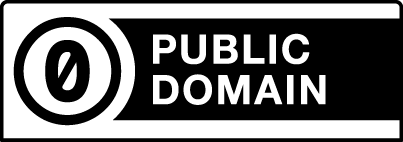- Photos & Map
How would you like to arrive?
- Call
- Description
- Good to know
- Nearby
Today's church entrance is the so-called "bridal house". Anyone who enters it with time to linger will feel the peace and security it radiates and feel at home in its coziness.
Hoyerhagen was first mentioned in documents around 1368, and the church is probably at least as old. The chancel is its oldest part. It was originally a chapel founded from Wechold, the origin of which is recorded as follows: There were monks in Wechold who ran a kellegiate church there, from which they provided surrounding small villages with God's word and sacrament. A chapel was also to be built in Hoyerhagen. The monks therefore had a wooden cross erected in the so-called "Schweinekuhle" with the intention of building a chapel there if the cross remained in place for two days. During the night, however, the cross was removed and placed at the current location of the church. The monks erected the cross again at the "Schweinkuhle", but the next morning it was moved again. It was then decided to build the chapel at the new location. Because of the events surrounding the cross, the church is called St. Crucius Church, which translates as the Church of the Holy Cross.
The small church has undergone many changes over the centuries. Hardly anything has remained as it once was. The only eye-catchers in the brightly painted church today are the restored wooden cross with the corpus and the animal symbols of the four evangelists behind the altar and the richly decorated wooden pulpit from 1681. And if you manage to plan a church service in Hoyerhagen, you can enjoy the full sound of the organ built in 1856 by Philipp Furtwängler from Elze.
Hoyerhagen was first mentioned in documents around 1368, and the church is probably at least as old. The chancel is its oldest part. It was originally a chapel founded from Wechold, the origin of which is recorded as follows: There were monks in Wechold who ran a kellegiate church there, from which they provided surrounding small villages with God's word and sacrament. A chapel was also to be built in Hoyerhagen. The monks therefore had a wooden cross erected in the so-called "Schweinekuhle" with the intention of building a chapel there if the cross remained in place for two days. During the night, however, the cross was removed and placed at the current location of the church. The monks erected the cross again at the "Schweinkuhle", but the next morning it was moved again. It was then decided to build the chapel at the new location. Because of the events surrounding the cross, the church is called St. Crucius Church, which translates as the Church of the Holy Cross.
The small church has undergone many changes over the centuries. Hardly anything has remained as it once was. The only eye-catchers in the brightly painted church today are the restored wooden cross with the corpus and the animal symbols of the four evangelists behind the altar and the richly decorated wooden pulpit from 1681. And if you manage to plan a church service in Hoyerhagen, you can enjoy the full sound of the organ built in 1856 by Philipp Furtwängler from Elze.
Good to know
Openings
Author
Mittelweser-Touristik GmbH
Lange Straße 18
31582 Nienburg/Weser
Organization
Mittelweser-Touristik GmbH
License (master data)
Mittelweser-Touristik GmbH
Nearby








